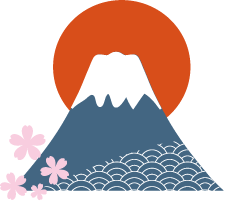Apprendre les salutations (Japanese bowings)
- fuji japan
- 2016年7月15日
- 読了時間: 2分
Au Japon, c'est commun de s'incliner au lieu de serrer la main. l'inclinaison fait partie des art martiaux comme le Karate ou le Kendo. Il y a trois façons d'effectuer l'inclinaison: ''eshaku'', ''keirei'', et ''saikeirei''. A 15 degrés, qui est utilisé pour saluer entres amis et collègues. à 30 degrés, utilisé pour saluer des clients et remercier quelqu'un. à 45 degrés qui est le plus poli et est utilisé pour s'excuser et montrer une profonde gratitude .
日本人(にほんじん)はお辞儀(じぎ)を頻繁(ひんぱん)にします。お辞儀(じぎ)は空手(からて)や剣道(けんどう)といった武道(ぶどう)の一部(いちぶ)です。その仕方(しかた)には会釈(えしゃく)、敬礼(けいれい)、最敬礼(さいけいれい)という3つがあります。15度(ど)のお辞儀(おじぎ)は、対等(たいとう)な友(とも)だちや同僚(どうりょう)に、30度(ど)は、お客(きゃく)さんとの挨拶(あいさつ)、お礼(れい)を言(い)うときに、45度(ど)は、一番(いちばん)丁寧(ていねい)なお辞儀(じぎ)で、深(ふか)い感謝(かんしゃ)やお詫(わ)びの時(とき)です。
In Japan, it is more common to bow instead of shaking hands. Bowing is an integral part of traditional martial arts such as Kendo and Karate. There are three ways of bowings, ''eshaku'', ''keirei'', and ''saikeirei''. A 15 degree angled bow is used when you see an acquaintance of equal business or social rank. a 30 degree angled bow is to greet customers or to thank someone. A 45 degree bow is the most polite one and is used to express feelings of deep gratitude or apology.

(photo par http://duncansensei.com/)

コメント